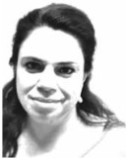Summary: Frail older people are often burdened with a range of complex medical conditions that leave them more susceptible to illness. The FrailSafe system aims to resolve this by offering a method that can predict, detect and manage frailty earlier on.
Frailty is a clinical syndrome manifested with progressive deterioration in more than one physiological systems and is associated with weakness, instability, low resilience to stressing factors, falls, hospitalisations and mortality (Fried et al. 2001; Walston et al. 2006).
The syndrome constitutes a challenge in modern clinical settings due to its insidious progress, high prevalence among older adults, multiparametric effect and the lack of consensus to clearly define its clinical manifestations (Buckinx et al. 2015; Clegg et al. 2013; van Kan et al. 2010). Recent research has proposed that the impact of frailty is closely dependent to an individual’s functional reserve, described as intrinsic capacity (WHO 2017), as minor adverse events (ie a fall) often have disproportionate effects in certain individuals.
The most effective way to address frailty in modern care involves frequent and in-depth examinations of nutritional, physical, medical, psychological, cognitive and everyday functioning domains (Fulop et al. 2010) which, undoubtedly, bears a significant burden for older adults and their families. Hence, in modern healthcare, frailty is often mis/underdiagnosed or addressed at a later and, often, not reversible stage.
The FrailSafe system was developed in the context of the EU funded FrailSafe study (Horizon 2020) to address the frailty syndrome and the challenges associated with its prediction, prevention, early on diagnosis, monitoring and management. The FrailSafe system proposes a solution combining modern technology, such as wearable sensors, serious games and deep machine learning techniques, and traditional standardised instruments, to provide a holistic, continuous and multiparametric assessment of health status. The system is user-friendly and implementable in real-life settings to enhance user adherence and acceptance. In particular, in the basic user scenario, the older adult uses the FrailSafe system in their home-setting by wearing a specially designed vest, to measure their heart rate, systolic and diastolic pressure, breathing rate and stability. Also, developed applications installed in the user’s smartphone or smartwatch record indoor and outdoor activity, to promote mobility and detect irregular motion patterns. Furthermore, a platform with serious games is provided in the user’s preferred gateway (tablet, smartphone, etc) with the two-fold aim to detect deviations (diagnostic tool) and provide training (rehabilitation tool) in multiple cognitive and physical domains, such as working memory, calculation, orientation, balance and grip strength.
All collected data are transmitted in real-time on an online platform and are available to older adults, authorised family members, caregivers and doctors. The FrailSafe platform creates an individualised Virtual Patient Model (VPM) for each participant, according to their characteristics, measured parameters and health data. The VPM offers the context for individualised interventions aimed to prevent and manage frailty and health deviations by taking under account the differences between subjects, in terms of performance, characteristics and resilience to adverse events. For example, parameters fed into the VPM are automatically utilised in serious games to offer a dynamically adaptable experience according to the users’ strengths and limitations.
The high levels of integration in the system make it feasible for all involved parties to receive alerts, in case that an alarming situation for health is detected, such as instability, fall, loss of orientation, high blood pressure, low levels of physical activity, high body mass index, etc. Also, older adults and authorised caregivers can receive recommendations for health improvement, in case an abnormality is detected in some health domain.
Furthermore, the Frailsafe team has developed a predictive algorithm, which was incorporated in the FrailSafe platform to analyse the collected data and predict the probability of a future adverse event, such as a fall or a hospitalisation. Hence, the FrailSafe system offers a holistic solution for the detection of health deviations early on and the prevention of health deterioration. Finally, the study developed a Virtual Community Platform (VCP), where stakeholders can exchange opinions and experiences on frailty management. The VCP functions as a conventional forum and is an open virtual space, but focused on frailty and related diseases. The integrated FrailSafe system complies with ethical standards offering high levels of security and anonymity of users’ data, as well as, the option for users to request full erasure of their data or revoke authorisation of their caregivers if deemed necessary.
The results of a six-month proof of concept study with the FrailSafe system were very optimistic showing that the FrailSafe system is a promising instrument in addressing, delaying and preventing frailty. In detail, older adults who used the FrailSafe system, presented improved mental and physical capacity in several measures and lower frailty transition rates, compared to peers belonging to the control group. Preliminary findings from the FrailSafe study evaluation show that the system is acceptable and desirable by older adults, caregivers, healthcare professionals, researchers and commercial stakeholders. All stakeholders stated that the system would contribute to their quality of life or current practices by offering a user-friendly and valuable complementary tool.
The FrailSafe system aims to fill a gap in modern healthcare and complement current practices by offering an innovative paradigm to predict, detect and manage frailty early on. The system bears significant benefits for the older adult as it delays frailty and promotes active ageing, IT literacy, social inclusion, self-confidence and sense of security in executing everyday activities. The enhanced efficiency in prevention, monitoring and management of health are associated with reduced personal costs for acute management of diseases (ie hospitalisations and surgeries) and an overall benefit in national health expenditure for older adults, considering reduction in waiting times, better treatment of chronically-ill patients, more efficient practices, reduced working hours for healthcare personnel, etc. Improved healthcare services for older adults contribute to a significant benefit from a societal perspective.
Active and healthy ageing is associated with higher levels of social inclusion, employment, and engagement in social activities (ie volunteering, consulting services, childcare) and thus, hold the key for financial competitiveness. Statistics suggest that approximately 10% of older adults are still in the workforce (Casey 2002) a percentage significantly hindered by frailty and disability. Furthermore, the delay of frailty reduces the physical and psychological burden for informal caregivers, the environmental cost stemming from medical materials and the overall quality of life among older adults.
Future studies are planned to further support, replicate and reinforce the effectiveness of the FrailSafe system in real-life settings, in order to effectively tackle and offer a robust solution to the challenge of frailty.
Key Points
- Older adults with frailty, often, experience impairments in multiple physiological and medical domains including mobility.
- The Frailty syndrome constitutes a challenge in modern clinical settings.
- The most effective way to address frailty involves frequent and in-depth examinations.
- The FrailSafe system was developed in the context of the EU funded FrailSafe study to address the frailty syndrome.
- The FrailSafe system offers early diagnosis, monitoring and health management.
- The system is user-friendly and operates in real-life settings to enhance user acceptance.
- The system offers significant benefits to older adult as it delays frailty and promotes active ageing.
Buckinx, F., Rolland, Y., Reginster, J.-Y., Ricour, C., Petermans, J., & Bruyère, O. (2015). Burden of frailty in the elderly population: perspectives for a public health challenge. Archives of Public Health, 73(1), 19.
Casey, B. (2002). Conditions for Active Ageing at International Level. In 18th CEIES Seminar: Active Ageing Statistics.
Clegg, A., Young, J., Iliffe, S., Rikkert, M. O., & Rockwood, K. (2013). Frailty in elderly people. The Lancet, 381(9868), 752–762.
Fried, L. P., Tangen, C. M., Walston, J., Newman, A. B., Hirsch, C., Gottdiener, J., … Burke, G. (2001). Frailty in older adults: evidence for a phenotype. The Journals of Gerontology Series A: Biological Sciences and Medical Sciences, 56(3), M146–M157.
Fulop, T., Larbi, A., Witkowski, J. M., McElhaney, J., Loeb, M., Mitnitski, A., & Pawelec, G. (2010). Aging, frailty and age-related diseases. Biogerontology, 11(5), 547–563.
World Health Organization, (2017). WHO clinical consortium on healthy ageing: topic focus: frailty and intrinsic capacity: report of consortium meeting, 1–2 December 2016 in Geneva, Switzerland. World Health Organization.
van Kan, G. A., Rolland, Y., Houles, M., Gillette-Guyonnet, S., Soto, M., & Vellas, B. (2010). The assessment of frailty in older adults. Clinics in Geriatric Medicine, 26(2), 275–286.
Walston, J., Hadley, E. C., Ferrucci, L., Guralnik, J. M., Newman, A. B., Studenski, S. A., … Fried, L. P. (2006) Research agenda for frailty in older adults: toward a better understanding of physiology and etiology: summary from the American Geriatrics Society/National Institute on Aging Research Conference on Frailty in Older Adults. Journal of the American Geriatrics Society, 54(6), 991–1001.









